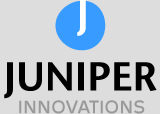Real time location systems (RTLS) are used to track and identify the location of property, equipment, assets and people in real time. They are becoming more sophisticated. So much so that if your organisation works in manufacturing RTLS can be a real shot in the arm. Why is this the case?
Software sophistication
RTLS software is becoming more feature rich, easier to use and can cope with a larger variety of operational and field based situations. Organisations want to save cost, time and get the most from resources so become more reliant on RTLS. Examples include:
- Real time stock enquiries in the plant or warehouse
- Asset location i.e. to find the best asset closest to where a job is
- Mobile worker positioning i.e. to understand where resources are and communicate to individuals or groups based on skills
- Contractor monitoring within and outside buildings
- Lone worker protection in and outdoors
- Understanding where resources and equipment are room by room in a building
- Field workers knowing where the nearest spare parts are
- Capture data on the move and send it back to central systems e.g. from taking pictures, scanning barcodes, collecting positional data to knowing when assets have moved or stopped moving, when they have been in areas or left areas and who has used them.
Device management capabilities
Gone are the days where an organisation needs to rely on a central hub or support centre for repairs and maintenance. Nowadays rather than shipping RTLS units for repairs between buildings or countries there is far better capability for:
- Diagnostics, fault finding and understanding problems per device remotely i.e. without the device being sent back to base
- Fixes, patches, wake up calls, software upgrades, parameter changes and even new software deployment being applied remotely
- Poison pills being activated remotely i.e. where hardware is lost or stolen ensuring it effectively “fails to work”
Software platform improvements
A variety of software toolkits and platforms are now available enabling faster applications to be developed for:
- Database and web reporting
- Mobile application design and development
- Remote RTLS monitoring and management
- Cross application development and deployment e.g. enabling software to be more easily developed, remotely deployed across multiple platforms. So if your employees had a mixture of Blackberry, Apple, HTC android and Windows Mobile devices and your organisation wanted applications for all devices, this is possible
Uniqueness
With improving RTLS technology comes the willingness of organisations to adopt unique applications to suit their organisation. There is a movement away from a “one size fits all” approach to having applications that support value added business processes, that collect data automatically or easily then integrate that into existing systems seamlessly.
Traceability requirements
More so than ever before equipment, people, inventory and products require more traceability. Whether it is drugs, food manufacturing or for health and safety requirements there is a dependency on knowing what is going on “within your own four walls” as well as tracing it further afield. With modern RTLS this is becoming easier to do. Plus the tracking can be at very sophisticated levels, for example being forensically proven.
Size and weight reductions
Some of the biggest gains in RTLS technology is with “size and weight loss” as hardware is becoming smaller and lighter. This includes for example:
- Two way tracking and communication devices that are the same size and can have the same functionality of an employee swipe card i.e. this can be used for contractors as well as employees
- Small wireless tracking devices that enable and asset equipment monitoring both indoors and out
- Forensic level tracking that use existing barcode labels
Easier hardware integration
Standard interfaces are making hardware choices easier. So for example:
- Our warehouse management system software works with any data capture device as long as it is browser based and has many standard interfaces including SAP and for finance systems
- We also have an Order reporting solution that can have many different types of hardware linked to it from own or third party GPS tracking to PDAs, tablet and desktop PCs
This means organisations do not need to wholsale change RTLS hardware or data capture devices. It also means for example that hardware deployment doesn’t have to be restricted by location, that infact the same software can be used around the business.
Software as a service and greater organisation visibility
The need for greater visibility to more people has help lead to more web based RTLS platforms. This can ensure greater visibility. It also however has pushed for alternative pricing models including software as a service (SaaS). This enables organisations to have more flexible payment including fixed monthly fees or pay as you go. Thus giving far higher rates of return.
Greater battery life and hardware power
With a reliance on RTLS and mobile devices to work in operations, offices, buildings and in the field comes a greater relieance on device battery and hardware processing power. Both these have also improved significantly over recent years. This makes them better suited for professional day to day use.
